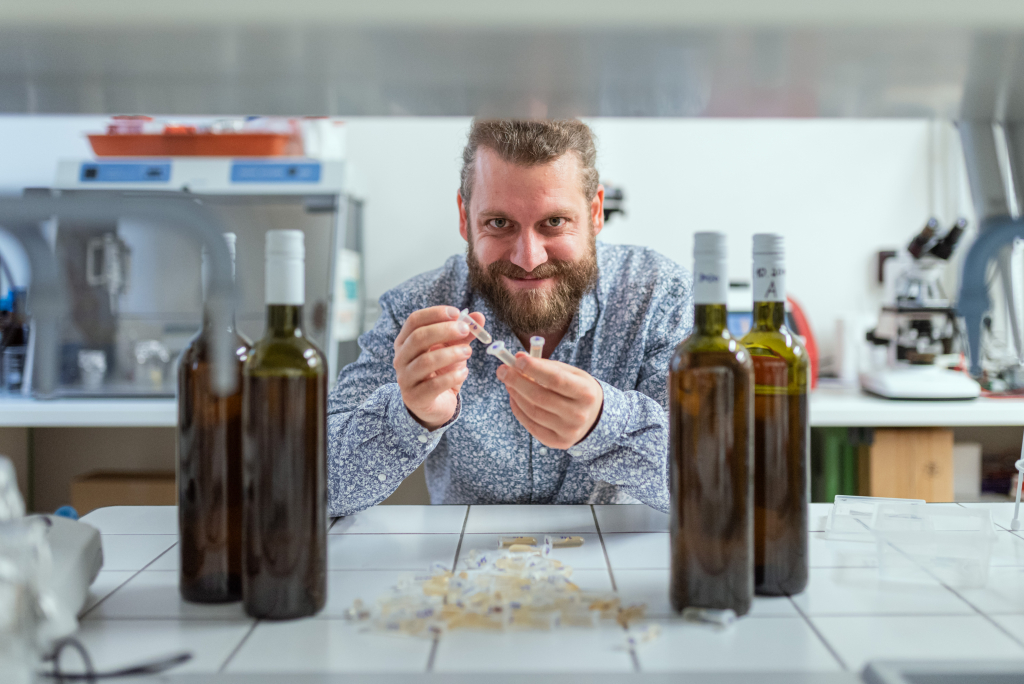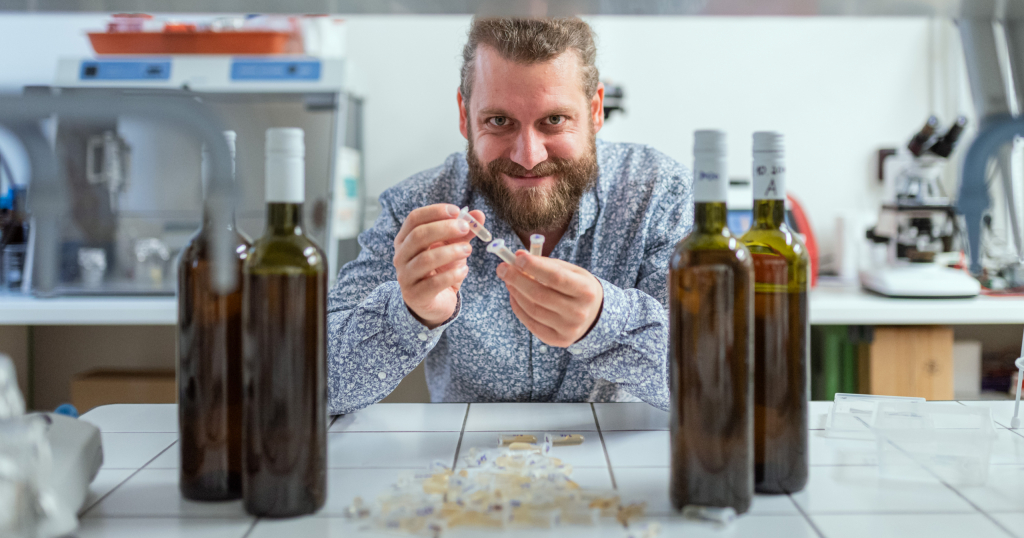
Panning wine, as well as misrepresenting the geographical origin of wine, brings multimillion-dollar losses to winemakers. Scientists from the Faculty of Agronomy at Brno’s Mendel University are trying to change this with the help of the UV fingerprint method, which has already been successfully applied in the past to detect counterfeit batches of pharmaceutical products. The method will now be tested on a sample of 100 Sauvignon wines from five countries. If the results are positive, the analysis will be extended to a larger set of wines, up to several hundred samples.
Scientists can distinguish between seemingly identical food samples by their fluorescent signature. The technology is based on a simple principle, so-called spectral characterisation of the sample. “We shine UV light on the sample and trigger a number of interesting photochemical reactions that are specific to the sample, and after a few minutes, you can tell what it is made of by its spectral characteristics. Practically any liquid sample can be illuminated,” explained Lukáš Nejdl, head of the Bioanalysis and Imaging Laboratory at the MENDELU Institute of Chemistry and Biochemistry.
The scientists will test the method in two waves on 2 and 9 November, to draw a comparison with existing methods, which are much more complex and time-consuming. Sauvignon was chosen because it is one of the most widespread varieties internationally. The new method has been developed and patented by Brno scientists. Their process uses the natural spectral properties of liquid samples affected by external UV radiation. “The spectral analysis of UV-induced changes in a solution can provide valuable information about the physical, chemical, or biological properties of a sample in a short time, even within a few minutes,” said Nejdl.
The falsification of the authenticity of wine in terms of panning, incorrect geographical origin or failure to maintain the correct production process is a major problem internationally. For example, more ‘Czech and Moravian’ Pálava wine is consumed in the Czech Republic than is produced. Moravian winegrowers are losing millions of euros per year as a result, and consumers are being misled.
“Reducing these financial losses can significantly help the wine-growing regions in particular, whose socio-economic status is linked to the cultivation, processing, production, and sale of wine and related cultural activities. It would be a great success to have a simple method to identify the geographical origin of wine,” said Mojmír Baroň, head of the MENDELU Institute of Viticulture and Enology.
Contact:
Ing. Lukáš Nejdl, Ph.D., lukasnejdl@gmail.com, tel.: +420 601 323 766
Ing. Tomáš Skolek, e.tomas.skolek@gmail.com, tel. +420 776 056 711
Source: Brno daily
